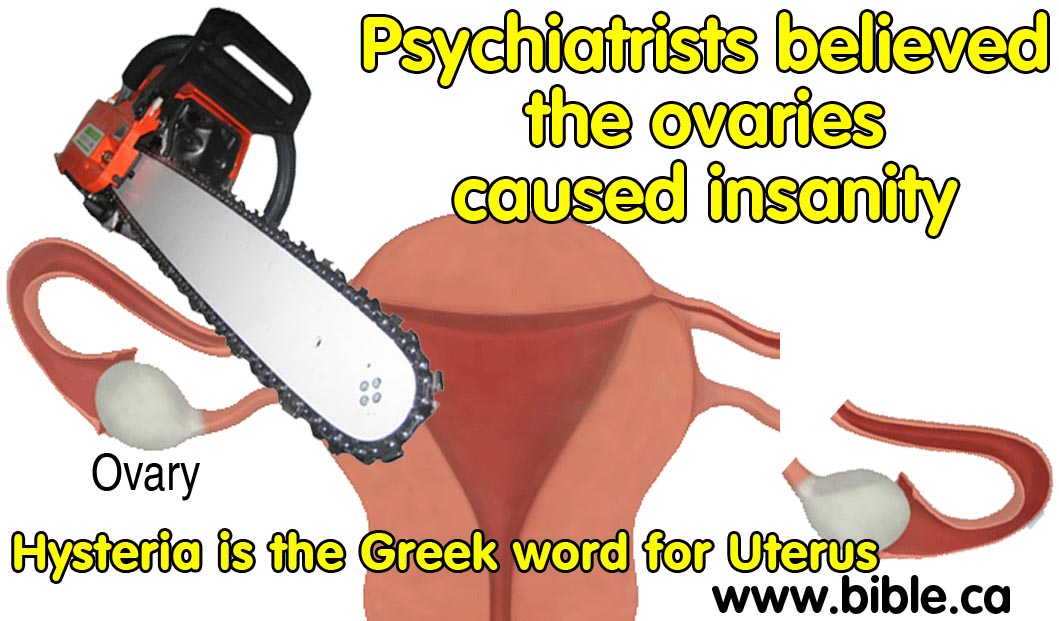Mapping the cognitive, circuit, and genetic aspects of mental disorders will yield new and better targets for treatment.
Apparently, Thomas Insel is unaware that in order to ethically determine the direction and the focus of scientific research requires an open mind; not a pre-determined agenda. Insel's announcement that the NIMH will no longer use the DSM is a political decision. Insel acknowledges the NIMH adopted a biological research focus based on assumptions; instead of using ethical scientific principles, and allowing the existing empirical data to guide the direction of psychiatric research; he says, "because we lack the data"!? What a crock! Insel knows there is little to no scientific basis in his assertion that "Mental disorders are biological disorders."
It is an assumption that is and has been embedded in the language of psychiatric diagnosis and treatment, an assumption that was entrenched along with the eugenic theories that spawned it. Eugenic theories which are still used in an attempt to justify the inhumane "standards of care" that are without empirical support, standards without empirical support should not be considered "standards of care" since by definition, standards are theoretically to be derived from the evidence base; instead, psychiatry validated their standards of care by consensus, a quasi-democratic political process, not using ethical medical judgement and empirical data from psychiatric research. By consensus, psychiatry effectively determined that some people with certain psychiatric diagnoses don't need their Human Rights protected; people of all ages are effectively stripped of their Human Rights by psychiatry, based on a belief that a diagnosis of mental illness is evidence the person has an incurable brain disease, that requires life-long treatment with teratogenic drugs. Without any definitive evidence to validate the brain disease hypothesis, it's simply a hope-filled belief in a hypothesis that is still seeking validation; it's not even a theory...let alone an actual disease.
Insel's assumptions are beliefs reminiscent of eugenics. The eugenics movement in this country also proceeded without any empirical evidence to validate it's ignorant assumptions.
The NIMH will assume that the brain disease hypothesis is a brain disorder or disease in the absence of empirical evidence that would validate the hypothesis. According to Thomas Insel, the NIMH is going to proceed as if an assumption, i.e."Mental disorders are biological disorders," is a sufficient substitute for using critical thinking skills, and for relying on the existing research data on "mental disorders" exercising sound judgment to determine what the focus and direction for psychiatric research should be. I wonder, if the best interests of those who experience cognitive, emotional and behavioral symptoms were even considered? Is there empirical data that supports Insel's use of biased assumptions that are without empirical support to justify this biased and myopic focus on brain biology for psychiatric research? Insel's announcement that the NIMH will focus on seeking evidence that "mental illness" is caused by a brain disease is not 'news;' the NIMH has been focused on seeking the evidence which would validate the brain disease hypothesis for decades...Insel's announcement that research funded by NIMH will no longer be guided by the DSM, due to it's lack of validity; is long overdue. The irony is, in the same blog post, Insel uses biased assumptions as if bigotry-based assumptions are a sufficient substitute for valid information when making mental health research policy decisions (theoretically) in the public interest. There is no ethical justification for the NIMH to continue to fund research looking for the still illusive genetic defects, brain diseases and bio-markers as it's main agenda. The pre-occupation with proving schizophrenia and/or any other psychiatric diagnosis, is caused by a biological defect or disease seems to purposely exclude research on known and suspected social and environmental risk factors that cause cognitive and emotional difficulties; worse it neglects the cognitive/behavioral/psycho/social/ therapeutic treatments that can help people right now in real world practice, if the treatments were actually available...
In effect, Insel is announcing all cognitive and emotional symptoms of distress, including undesirable, or disapproved of behavior, is caused by a yet to be identified, biological disorder or disease process---while simultaneously ignoring the overwhelming evidence of environmental causal factors such as sexual, physical, and emotional abuse and neglect, poverty, malnutrition, environmental violence, socio-economic-political status and intra- and inter-personal conflicts are highly correlated with, and known to exacerbate (if not cause) what Insel 'assumes' are biological disorders...
Allen Frances, had a
OP-Ed published in New Scientist, which concludes with the statement, "Anything that goes into the manual should already have passed rigorous research testing; the manuals are far too important to include untested hypotheses. DSM-5 is not, and cannot be, an appropriate guide to future research."
I agree. I would add that assumptions about the scientific validity of a hypothetical, neuro-biological cause for any psychiatric diagnoses (or anything else) is also inappropriate. An assumption is not an ethical scientific basis for psychiatric research; it is not an ethical foundation for a new nosology either.
I wonder if Insel can explain why dangerous neuroleptic, or "antipsychotic" drugs that are minimally effective for a minority of people diagnosed with schizophrenia, are prescribed off label, to children?
Human Experimentation is "effective psychiatric treatment."
It's the standard of care used in psychiatric practice.
via National Advisory Mental Health Council 219th Meeting September 18-19, 2008
NIMH Director's Report:
an excerpt:
"Results from the NIMH-funded 6-year multisite Treatment of Early Onset Schizophrenia Study (TEOSS) found no significant differences in outcomes with first- or second-generation antipsychotic medications. There was a striking difference in side effects, but there was no evidence that any of the medications was the best choice for the entire group of people being treated. Similar results were obtained in the Clinical Antipsychotic Trials of Intervention Effectiveness (CATIE) trial, the Cost Utility of The Latest Antipsychotics in Severe Schizophrenia (CUtLASS) trial from the United Kingdom, and the large-scale Veterans Administration trial.
Despite the lack of a clear superiority in overall effectiveness of the second-generation drugs, they account for more than 90 percent of the market and cost about 20 times more than the first-generation compounds." Thomas Insel
via National Institutes of Health:
The
NIH Public Access Policy ensures that the public has access to the published results of NIH funded research. It requires scientists to submit final peer-reviewed journal manuscripts that arise from NIH funds to the digital archive
PubMed Central upon acceptance for publication. To help advance science and improve human health, the Policy requires that these papers are accessible to the public on PubMed Central no later than 12 months after publication.

















